-
 Bitcoin
Bitcoin $107,352.1067
0.28% -
 Ethereum
Ethereum $2,429.3531
-0.90% -
 Tether USDt
Tether USDt $1.0001
-0.02% -
 XRP
XRP $2.1894
4.62% -
 BNB
BNB $646.7968
0.36% -
 Solana
Solana $147.4290
4.03% -
 USDC
USDC $0.9998
-0.02% -
 TRON
TRON $0.2756
1.52% -
 Dogecoin
Dogecoin $0.1630
1.14% -
 Cardano
Cardano $0.5612
1.18% -
 Hyperliquid
Hyperliquid $37.0580
-0.05% -
 Bitcoin Cash
Bitcoin Cash $496.9410
-0.09% -
 Sui
Sui $2.7318
3.19% -
 Chainlink
Chainlink $13.1503
0.58% -
 UNUS SED LEO
UNUS SED LEO $9.0766
0.55% -
 Avalanche
Avalanche $17.7220
1.46% -
 Stellar
Stellar $0.2380
1.52% -
 Toncoin
Toncoin $2.8439
0.38% -
 Shiba Inu
Shiba Inu $0.0...01143
1.84% -
 Litecoin
Litecoin $85.8053
1.47% -
 Hedera
Hedera $0.1483
2.70% -
 Monero
Monero $314.3240
2.12% -
 Bitget Token
Bitget Token $4.6725
0.77% -
 Dai
Dai $1.0000
0.00% -
 Polkadot
Polkadot $3.3555
1.28% -
 Ethena USDe
Ethena USDe $1.0001
0.02% -
 Uniswap
Uniswap $7.0890
2.64% -
 Pi
Pi $0.5355
-3.40% -
 Pepe
Pepe $0.0...09393
1.06% -
 Aave
Aave $256.8136
-1.90%
What order types does Bybit grid trading support? Functional explanation
Bybit's grid trading uses market, limit, and stop orders to automate trading, helping users capitalize on market movements and manage risk effectively.
May 12, 2025 at 12:21 am
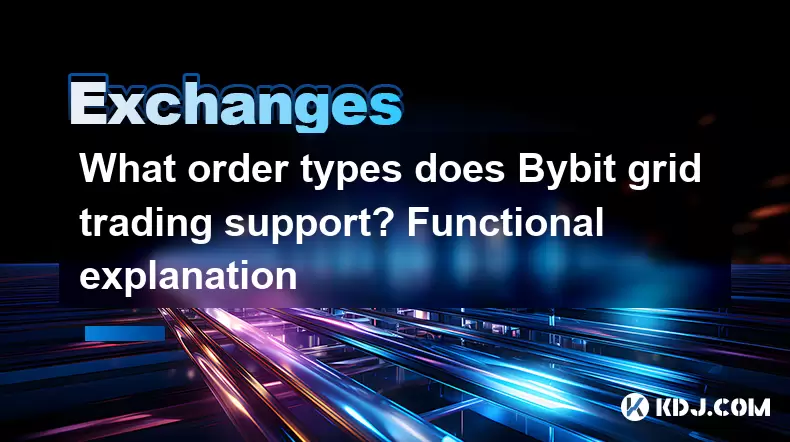
Bybit, a prominent cryptocurrency exchange, offers a variety of order types within its grid trading feature, which is designed to automate trading strategies and maximize potential profits. Understanding the different order types supported by Bybit's grid trading system is crucial for traders looking to leverage this tool effectively. This article will delve into the specifics of each order type, providing a detailed explanation of their functions and how they can be utilized within the grid trading framework.
Introduction to Bybit Grid Trading
Bybit's grid trading is a strategy that involves setting up a series of buy and sell orders at predetermined price levels. The goal is to profit from the volatility of the cryptocurrency market by buying low and selling high within a specified range. This automated system can help traders capitalize on market movements without the need for constant monitoring.
Types of Orders in Bybit Grid Trading
Bybit's grid trading supports several types of orders, each with its unique functionality. Here, we will explore the primary order types: Market Orders, Limit Orders, and Stop Orders.
Market Orders
Market Orders are executed immediately at the best available price in the market. In the context of grid trading, market orders are used to quickly enter or exit positions when the price hits a certain level within the grid.
Functionality: When a grid trading strategy is set up, market orders can be automatically triggered to buy or sell an asset as soon as the price touches a predefined level. This ensures that the trader can capitalize on the market movement without delay.
Example: If the grid is set to buy Bitcoin at $30,000 and the price hits this level, a market order will be executed to purchase the asset at the current market price, which may be slightly above or below $30,000.
Limit Orders
Limit Orders allow traders to specify the price at which they want to buy or sell an asset. These orders are only executed if the market reaches the specified price, providing more control over the execution price.
Functionality: In grid trading, limit orders are used to set up a series of buy and sell orders at different price levels within the grid. This helps in maintaining a disciplined approach to trading by ensuring that trades are executed at the desired prices.
Example: A trader sets up a grid with limit orders to buy Bitcoin at $30,000 and sell at $31,000. If the price reaches $30,000, the buy order will be executed, and if it reaches $31,000, the sell order will be triggered.
Stop Orders
Stop Orders, also known as stop-loss orders, are designed to limit potential losses by automatically selling an asset when it reaches a certain price level. They can also be used to enter a position when the price moves in a favorable direction.
Functionality: Within grid trading, stop orders can be used to protect profits or minimize losses. For instance, a stop order can be set to sell an asset if the price falls below a certain level within the grid, ensuring that the trader does not suffer significant losses.
Example: If a trader has a grid set up and the price of Bitcoin drops to $29,000, a stop order can be triggered to sell the asset at this level, thereby limiting the trader's exposure to further downside risk.
How to Set Up Grid Trading on Bybit
Setting up grid trading on Bybit involves a few key steps. Here's a detailed guide on how to configure your grid trading strategy using the different order types:
Access the Grid Trading Interface: Log into your Bybit account and navigate to the trading section. Select the 'Grid Trading' option from the menu.
Choose Your Trading Pair: Select the cryptocurrency pair you wish to trade. For example, BTC/USDT.
Set Up Your Grid: Define the upper and lower price limits of your grid. For instance, you might set the upper limit at $32,000 and the lower limit at $28,000 for Bitcoin.
Configure Order Types:
- Market Orders: If you want to use market orders, ensure that the 'Market Order' option is selected for both buying and selling within the grid.
- Limit Orders: Set specific prices for buying and selling within the grid. For example, buy at $30,000 and sell at $31,000.
- Stop Orders: Set stop-loss levels to protect your positions. For instance, set a stop order to sell at $29,000 if the price drops to this level.
Adjust Grid Parameters: Customize the number of grids, the amount to invest, and other parameters according to your strategy.
Review and Confirm: Double-check all settings and confirm the setup. Once activated, the grid trading system will automatically execute trades based on the specified order types and price levels.
Benefits of Using Different Order Types in Grid Trading
Utilizing different order types in Bybit's grid trading system offers several advantages:
Flexibility: Traders can tailor their strategies to suit their risk tolerance and market expectations by using a combination of market, limit, and stop orders.
Automation: The automated execution of orders ensures that trades are made without the need for constant monitoring, allowing traders to capitalize on market movements efficiently.
Risk Management: Stop orders help in managing risk by automatically closing positions when the market moves against the trader, thereby protecting capital.
Practical Considerations and Tips
When setting up grid trading on Bybit, it's essential to consider the following:
Volatility: The effectiveness of grid trading can be influenced by market volatility. Ensure that your grid parameters are adjusted to account for potential price swings.
Liquidity: Choose trading pairs with sufficient liquidity to ensure that your orders are executed smoothly.
Risk Assessment: Always assess the potential risks associated with your grid trading strategy. Use stop orders to mitigate losses and protect your investment.
Monitoring: While grid trading is automated, periodic monitoring of your trades and adjustments to your strategy based on market conditions can enhance performance.
Frequently Asked Questions
Q1: Can I combine different order types within a single grid trading strategy on Bybit?
Yes, Bybit allows traders to combine different order types within a single grid trading strategy. For example, you can set up market orders for quick entry and exit, limit orders for precise price control, and stop orders to manage risk.
Q2: How does Bybit handle partial fills in grid trading?
Bybit's grid trading system handles partial fills by automatically adjusting subsequent orders to maintain the overall strategy. If a buy or sell order is only partially filled, the remaining amount will be adjusted in the next order within the grid.
Q3: What are the fees associated with grid trading on Bybit?
The fees for grid trading on Bybit include trading fees, which are typically charged as a percentage of the transaction amount. These fees can vary based on your trading volume and the specific cryptocurrency pair you are trading. It's advisable to check Bybit's fee structure before setting up your grid trading strategy.
Q4: Can I modify my grid trading strategy after it has been activated?
Yes, Bybit allows you to modify your grid trading strategy even after it has been activated. You can adjust the grid parameters, change the order types, or stop the strategy altogether. However, be aware that any changes may affect the ongoing trades within the grid.
Disclaimer:info@kdj.com
The information provided is not trading advice. kdj.com does not assume any responsibility for any investments made based on the information provided in this article. Cryptocurrencies are highly volatile and it is highly recommended that you invest with caution after thorough research!
If you believe that the content used on this website infringes your copyright, please contact us immediately (info@kdj.com) and we will delete it promptly.
- SEI Mirroring Solana: Price Spikes and the Next Big Crypto?
- 2025-06-28 20:52:13
- PENGU Price Surges: Are Whales Targeting $0.0149?
- 2025-06-28 20:30:12
- Notcoin's Wild Ride: Price Swings, Market Cap, and What's Next
- 2025-06-28 20:30:12
- COMP Price Wobbles as a16z Moves Tokens Amid Crypto Jitters
- 2025-06-28 20:52:13
- Bitcoin, XRP, and Macro Trends: Navigating the Crypto Landscape in 2025 and Beyond
- 2025-06-28 20:55:12
- Navigating Offshore Casinos: A Safe Haven for US Players?
- 2025-06-28 20:55:12
Related knowledge
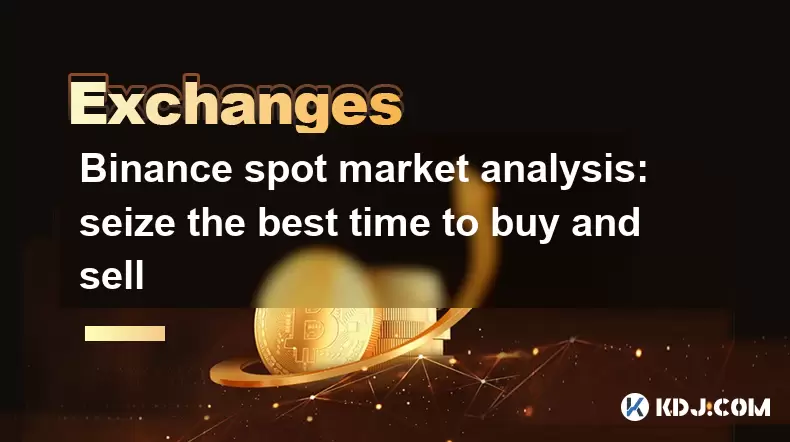
Binance spot market analysis: seize the best time to buy and sell
Jun 19,2025 at 04:56pm
Understanding the Binance Spot MarketThe Binance spot market is one of the most popular platforms for cryptocurrency trading globally. It allows users to trade digital assets at current market prices, making it essential for traders aiming to buy low and sell high. Unlike futures or margin trading, spot trading involves direct ownership of the asset aft...
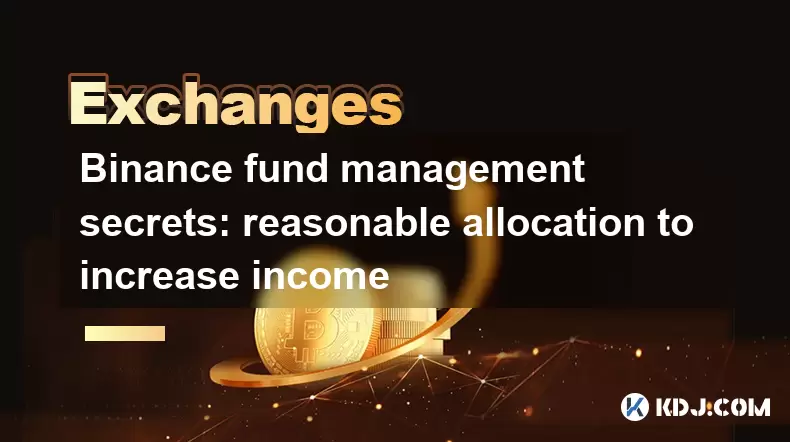
Binance fund management secrets: reasonable allocation to increase income
Jun 22,2025 at 02:29pm
Understanding Binance Fund ManagementBinance fund management involves strategic allocation of your cryptocurrency assets to optimize returns while managing risk. The key to successful fund management lies in understanding how different investment options on the Binance platform can be utilized to create a diversified portfolio. This includes spot tradin...
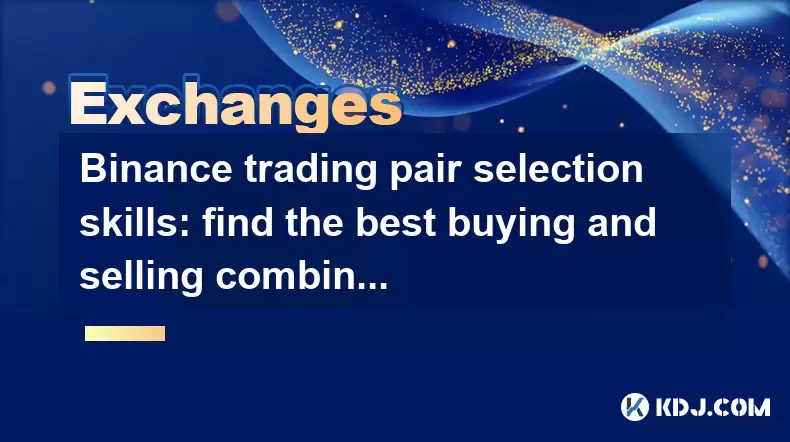
Binance trading pair selection skills: find the best buying and selling combination
Jun 23,2025 at 02:49am
Understanding the Basics of Trading Pairs on BinanceBefore diving into trading pair selection skills, it's essential to understand what a trading pair is. On Binance, a trading pair refers to two cryptocurrencies that can be traded against each other. For example, BTC/USDT means Bitcoin is being traded against Tether. Each trading pair has its own liqui...
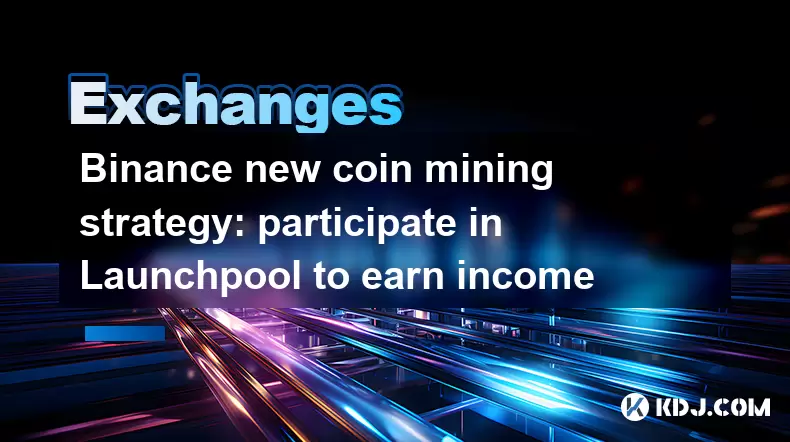
Binance new coin mining strategy: participate in Launchpool to earn income
Jun 23,2025 at 11:56am
What is Binance Launchpool and how does it work?Binance Launchpool is a feature introduced by the world’s largest cryptocurrency exchange, Binance, to allow users to earn new tokens through staking. This platform enables users to stake their existing cryptocurrencies (such as BNB, BUSD, or other supported assets) in exchange for newly launched tokens. T...
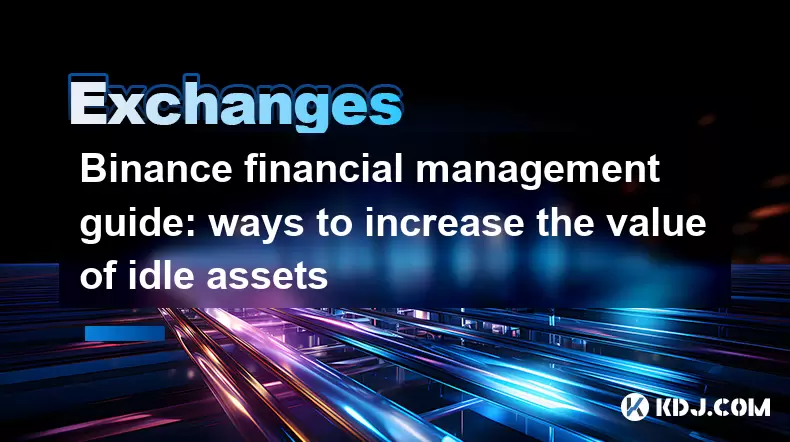
Binance financial management guide: ways to increase the value of idle assets
Jun 19,2025 at 11:22pm
Understanding Idle Assets in the Cryptocurrency SpaceIn the fast-paced world of cryptocurrency, idle assets refer to digital currencies that are not actively being used for trading, staking, or yield farming. Holding these funds in a wallet without utilizing them means missing out on potential growth opportunities. Binance, as one of the leading platfor...
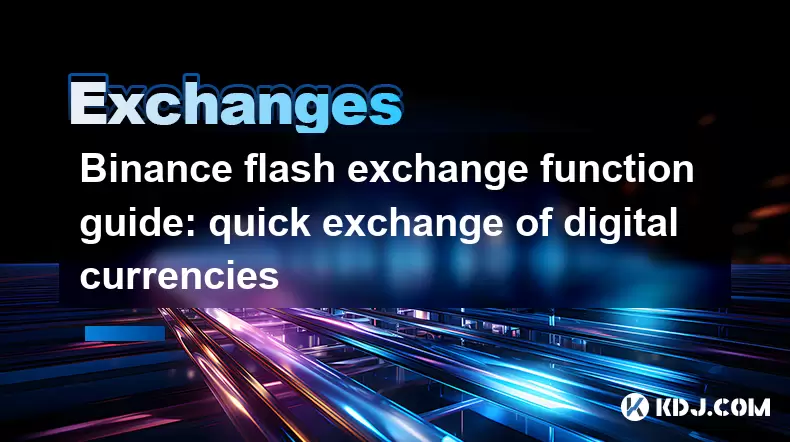
Binance flash exchange function guide: quick exchange of digital currencies
Jun 23,2025 at 12:29pm
What is the Binance Flash Exchange Function?The Binance Flash Exchange function is a powerful tool designed to allow users to instantly swap between supported cryptocurrencies without the need for placing traditional buy/sell orders. This feature simplifies the trading process by offering a direct exchange mechanism, eliminating the requirement to conve...

Binance spot market analysis: seize the best time to buy and sell
Jun 19,2025 at 04:56pm
Understanding the Binance Spot MarketThe Binance spot market is one of the most popular platforms for cryptocurrency trading globally. It allows users to trade digital assets at current market prices, making it essential for traders aiming to buy low and sell high. Unlike futures or margin trading, spot trading involves direct ownership of the asset aft...

Binance fund management secrets: reasonable allocation to increase income
Jun 22,2025 at 02:29pm
Understanding Binance Fund ManagementBinance fund management involves strategic allocation of your cryptocurrency assets to optimize returns while managing risk. The key to successful fund management lies in understanding how different investment options on the Binance platform can be utilized to create a diversified portfolio. This includes spot tradin...

Binance trading pair selection skills: find the best buying and selling combination
Jun 23,2025 at 02:49am
Understanding the Basics of Trading Pairs on BinanceBefore diving into trading pair selection skills, it's essential to understand what a trading pair is. On Binance, a trading pair refers to two cryptocurrencies that can be traded against each other. For example, BTC/USDT means Bitcoin is being traded against Tether. Each trading pair has its own liqui...

Binance new coin mining strategy: participate in Launchpool to earn income
Jun 23,2025 at 11:56am
What is Binance Launchpool and how does it work?Binance Launchpool is a feature introduced by the world’s largest cryptocurrency exchange, Binance, to allow users to earn new tokens through staking. This platform enables users to stake their existing cryptocurrencies (such as BNB, BUSD, or other supported assets) in exchange for newly launched tokens. T...

Binance financial management guide: ways to increase the value of idle assets
Jun 19,2025 at 11:22pm
Understanding Idle Assets in the Cryptocurrency SpaceIn the fast-paced world of cryptocurrency, idle assets refer to digital currencies that are not actively being used for trading, staking, or yield farming. Holding these funds in a wallet without utilizing them means missing out on potential growth opportunities. Binance, as one of the leading platfor...

Binance flash exchange function guide: quick exchange of digital currencies
Jun 23,2025 at 12:29pm
What is the Binance Flash Exchange Function?The Binance Flash Exchange function is a powerful tool designed to allow users to instantly swap between supported cryptocurrencies without the need for placing traditional buy/sell orders. This feature simplifies the trading process by offering a direct exchange mechanism, eliminating the requirement to conve...
See all articles
























































































